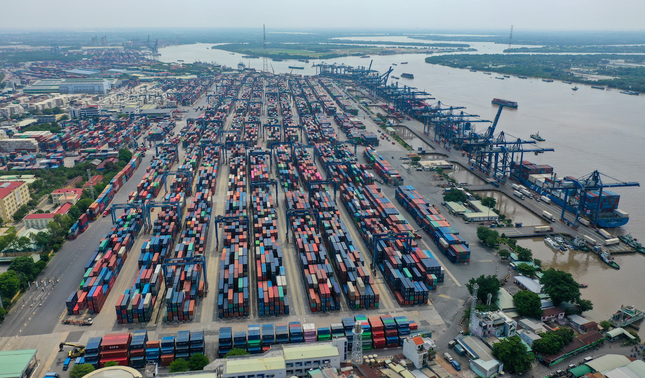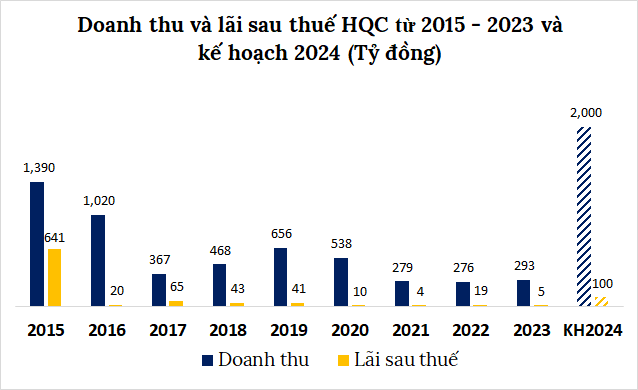At Saigon Port Customs Sub-department, as of January 2024, the number of goods held for over 30 days and 60 days exceeds 1,200 containers. At Tan Son Nhat International Airport Customs Sub-department, the inventory consists of 134 product lines, with over 67.6 tons, more than double the amount from the previous month (an increase of 35 tons).
Ho Chi Minh City Customs Department stated that the inventory in January increased compared to the end of 2023 due to the approaching Lunar New Year, with more imported goods arriving at the port than before.
It is worth noting that there are still 4,845 containers held for over 90 days at seaports in January. The inventory at air customs sub-department consists of 2,038 product lines, with nearly 470,000 tons. Among them, Tan Son Nhat International Airport Customs Sub-department has nearly 1,700 product lines, with over 467 tons; Express Customs Sub-department has 348 product lines, with almost 2 tons.

Thousands of “ownerless” containers at Cat Lai port pose a risk of port congestion.
A representative from Saigon Newport Corporation stated that thousands of scrap containers “lying around” at seaports occupy a large area and have a significant impact on production, business, and exploitation activities at the ports.
In particular, businesses incur losses of billions of dong in warehousing costs, not to mention an additional fee of $100-150 USD/container for transporting these containers from Cat Lai port to other ports for storage, creating space to receive more exported and imported goods.
According to the representative, most companies that import scrap goods are “ghost companies” that do not have the function of processing scrap goods but still import them and leave them at the port without going through customs procedures. When the authorities cannot determine the location and responsible person of these companies, they continually publish information, but no company comes to complete the customs procedures. The representative added that they have requested the competent authorities to take action to handle this inventory, but there has been no result yet.
Mr. Nguyen Huu Nghiep, Deputy Director of Ho Chi Minh City Customs Department, shared that although the department has been active in handling the inventory, the process involves multiple units, handling procedures, auctions, etc., which takes time. Some batches have gone through multiple auctions and still have not found buyers, so price reduction procedures have to be carried out, which also takes time.
With a large number of containers left for a long period, the leaders of Ho Chi Minh City Customs Department believe that there is a risk of environmental pollution and congestion at the port. The inventory in the yards also reduces the number of empty containers, forcing shipping companies to increase transportation costs. Delayed circulation of goods could result in congestion at Cat Lai port, leading to multiple movements of containers within the port or among ports.
Regarding the handling approach, Ho Chi Minh City Customs Department stated that after inspections and verification, they will notify and seek the owners of goods held for over 90 days; establish collective ownership; set up a council to handle the inventory annually, involving relevant departments such as Department of Natural Resources and Environment, Department of Finance, etc. Then, depending on the situation, there will be plans for auctions or disposal.







































